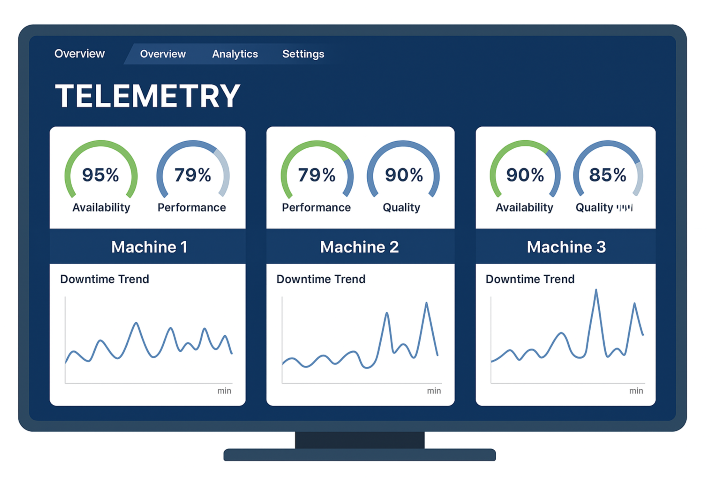In today’s world, where industrial competition has reached its maximum speed, access to accurate and real-time data is one of the keys to the success of any production unit. Telemetry systems enable data to be transmitted from sensors and industrial machinery to the control center without direct human intervention.
By designing and implementing industrial telemetry systems, Arcagg helps various industries improve monitoring, predict errors, and increase productivity.
What is telemetry and how does it work?
Telemetry means remote measurement. This technology collects data from remote locations (for example, a factory, power station, or oil facility) and sends it to a central server via communication networks.
Main steps in the operation of telemetry systems:
Measurement: Sensors record data such as temperature, pressure, vibration, or liquid level.
Data transmission: Data is sent via wired (Modbus, Ethernet) or wireless (GSM, LoRa, Wi-Fi) connections.
Analysis: Central software analyzes the data and sends an alert in case of an error.
Display: Information is visible on the management dashboard.
Main components of an industrial telemetry system
Sensors: Physical measuring instruments.
Transmitters: Convert sensor signals into digital data.
Remote control unit (RTU): Data collection and transmission center.
Central platform (SCADA/Cloud): Monitoring and analysis software.
Advantages of using telemetry in production lines
Continuous monitoring of equipment without the need for physical presence.
Reduction of production downtime (Downtime).
Increased accuracy of management decision-making.
Reduced maintenance costs.
Creating a suitable infrastructure for predictive maintenance.
Comparison of wired and wireless telemetry
Features of wired telemetry Wireless telemetry
High installation cost Low
Very stable connection stability depending on network coverage
Very high limited scalability
Application of fixed environments of distributed or remote projects
Telemetry communication with artificial intelligence and cloud
By connecting telemetry systems to cloud platforms and artificial intelligence algorithms, data can be used to predict failures, optimize energy consumption, and analyze production processes.
In its recent projects, Arcagg has used the combination of Cloud-Fog and AI to analyze industrial data in real time.
Application example
In one of the automotive projects, the telemetry system designed by Arcagg was able to identify the possibility of bearing failure before it occurred by analyzing vibration data from production line engines. Result:
25% reduction in emergency stops
18% savings in repair costs
Conclusion
Telemetry is no longer a luxury technology; it is a vital tool for manufacturing organizations to survive in today’s competitive world. Arcagg paves the way for digital transformation in factories by providing specialized industrial telemetry solutions.




